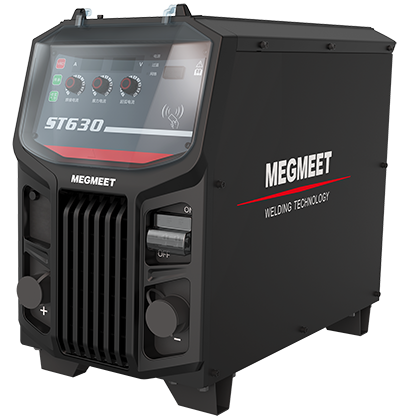MMA welding, also known as Shielded Metal Arc Welding (SMAW), is one of the most widely used welding processes in industries worldwide. Known for its versatility, portability, and cost-effectiveness, MMA welding has become a cornerstone of modern manufacturing. This guide explores the history, principles, equipment, advantages, disadvantages, and applications of MMA welding, helping you understand why it remains a preferred choice for welders and industries.

I. What is MMA Welding?
MMA welding, or Manual Metal Arc welding, is a traditional arc welding process where a manually operated electrode is used to create an electric arc. The flux-coated electrode protects the molten weld pool from atmospheric contamination, ensuring a strong and durable weld joint. It is commonly referred to as SMAW (Shielded Metal Arc Welding) in North America and MMA (Manual Metal Arc) in Europe.
II. History and Evolution of MMA Welding
1) Origins of MMA Welding
The roots of MMA welding trace back to the late 19th century when Nikolay Slavyanov, a Russian scientist, developed the first flux-coated electrode. His innovative work laid the foundation for modern welding techniques.
2) Evolution of SMAW Welding Technology
Over the 20th century, MMA welding evolved significantly, transitioning from basic SMAW welding machines to advanced inverter-based systems. Today, modern SMAW welding machines offer better control, efficiency, and weld quality, making them indispensable in industrial and construction settings.
III. Key Principles of SMAW Welding
1) Arc Formation
The welding process begins with the formation of an electric arc between the electrode and the workpiece. This arc generates the heat needed to melt the base metal and the electrode, forming a strong metallurgical bond.
2) Electrode Selection
Choosing the right electrode is critical. Factors such as material compatibility, welding position, and desired weld properties influence electrode selection. With a wide variety of electrodes available, selecting the right one can significantly improve weld quality.
3) Shielding Mechanism
The flux coating on the electrode plays a dual role: it protects the weld pool from atmospheric gases and contributes to weld penetration and mechanical properties.
III. MMA Welding Equipment and Tools
1) Welding Power Source
A reliable power source is the heart of MMA welding. While traditional SMAW welding machines are still in use, modern inverter-based machines offer superior efficiency and portability.
2) Electrode Holder
The electrode holder, also known as a stinger or electrode clamp, is essential for securing and maneuvering the electrode. It ensures good electrical contact and precise control during welding.
3) Personal Protective Equipment (PPE)
Safety is non-negotiable in MMA welding. Essential PPE includes welding helmets, safety glasses, gloves, and fire-resistant clothing to protect against arc radiation, sparks, and heat.
IV. Step-by-Step MMA Welding Process
1) Preparation
Clean the workpiece to remove oil, rust, or other contaminants.
Select the appropriate electrode and set up the welding machine.
2) Striking the Arc
3) Welding Technique
4) Finishing the Weld
V. Advantages of SMAW Welding
1) Versatility
SMAW welding can be used on a wide range of materials, including steel, stainless steel, and cast iron. Its adaptability to different welding positions and thicknesses makes it ideal for construction, repair, and fabrication work.
2) Accessibility
The simplicity and affordability of SMAW welding machines make them accessible to small workshops and novice welders.
3) Portability
Compact SMAW welding machines and lightweight accessories enable on-site welding, reducing logistical challenges.
VI. Disadvantages of MMA Welding
1) Slag Formation
The flux coating on the electrode leaves behind slag, which must be removed after each weld pass. This adds time and labor to post-weld cleanup.
2) Limited Automation
Unlike automated processes like robotic welding, SMAW welding requires manual skill and is less suitable for high-volume production.
3) Lower Deposition Rates
Compared to processes like GMAW or FCAW, MMA welding has slower deposition rates, making it less efficient for large-scale projects.
VII. Applications of SMAW Welding
1) Construction Industry
MMA welding is widely used in construction for steel framing, infrastructure repairs, and pipeline welding. Its portability and versatility make it ideal for onsite work.
2) Automotive Industry
SMAW welding is used in manufacturing vehicle chassis, exhaust systems, and body panels due to its ability to weld a variety of metals.
3) Shipbuilding Industry
In shipbuilding, SMAW welding is employed for constructing hulls, decks, and structural components, thanks to its ability to weld thick steel plates in challenging positions.
VIII. Future Trends in MMA Welding
As technology advances, modern SMAW welding machines are becoming more energy-efficient and compact. Innovations such as digital control systems and advanced electrode materials are expected to further enhance the capabilities of MMA welding.
Conclusion
MMA welding remains a cornerstone of industrial manufacturing, offering unparalleled versatility and accessibility. Whether you're working with an SMAW welding machine for sale or a high-end inverter model, understanding its principles and best practices can help you achieve superior welding quality. As industries evolve, MMA welding will continue to play a critical role in shaping the future of manufacturing.
Related articles:
1. Differences between CO2 Gas Welding, Manual Welding, and TIG Welding
2. MMA "Stick" Welding: What is Open Circuit Voltage (OCV)?
3. MIG/MAG, MMA, TIG Welding: Choosing the Right Technique
4. How To Weld Stainless Steel – MIG, TIG and MMA Welding
5. 10 MMA Welding Processes Flaws And Megmeet’s Solutions




